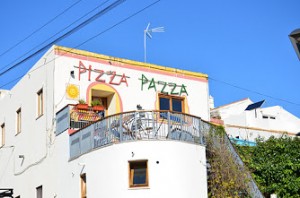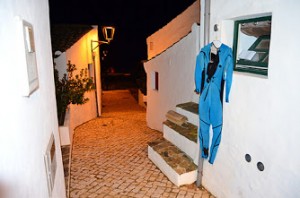Case 1
From pizzas to slow-travel
 We wander the streets in which the traditional white of the facades throws back the light and the heat of a January day managing to conjure early spring. We pass a resident and various visiting international tourists, who without exception all greet us with a smile and a “Bom dia” almost as warm as the magnificent weather. We feel something genuine and find it difficult to believe how this village, less than a decade ago, lay in ruins and was down to seven inhabitants.
We wander the streets in which the traditional white of the facades throws back the light and the heat of a January day managing to conjure early spring. We pass a resident and various visiting international tourists, who without exception all greet us with a smile and a “Bom dia” almost as warm as the magnificent weather. We feel something genuine and find it difficult to believe how this village, less than a decade ago, lay in ruins and was down to seven inhabitants.
Located in the council of Vila do Bispo, in the midst of the Southwest Alentejan and Vicentina Coast Natural Park (1) and a short distance from some of the best beaches in the country, Pedralva village represents a landmark in restoration projects. Thanks to a small group of entrepreneurs, it proved possible to restore the overwhelming majority of residences in the village. Project leader, António Ferreira, told us how in discovering this village while on holiday, he swiftly grasped its potential for creating something different and innovative within the scope of the regional tourist context.
António Ferreira refers to how the village experienced a long process of slow depopulation. Thus, slowly, the settlement went from being a centre of local life (where persons from other nearby villages would gather for festivities and trade) to a settlement in ruins and all but deserted. Indeed, throughout years, this village became known only due to its pizzeria (that still today serves up its delights to visitors) and to the extent of getting named the Portuguese for ‘Pizza Village’. However, where resignation once ruled, this entrepreneur perceived a major opportunity.
Setting up a company with four friends, he launched a project involving the purchase and restoration of the majority of the properties existing in Pedralva (31 homes, the former primary school and the grocer’s). The first two years were essentially given over to identifying the owners (over 200, and both Portuguese and international), and negotiating the acquisition of the ruins. Here, António Ferreira highlights how the transparency and frontality with which he approached the persons was essential to project success, avoiding “speculation” and “any major difference in price between similar houses”.
The two following years were dedicated to the restoration of the properties, retaining their characteristics and respecting their original layouts and profiles. Through recourse to traditional techniques and materials, whilst however displaying concern over sustainability and respect for the environment, house by house, the village underwent a slow transformation. António Ferreira recalls the impact of this change not only in terms of the settlement but also in its current and former residents. He recalls how “it was systematic, at weekends, the families would come to witness the recovery of their homes with the feeling that it was theirs”.
 Today, the Pedralva Village stands out as a distinctive tourism project based both upon the slow-travel logic and social responsibility. Employing twelve people, the vast majority from the local region, the project encourages clients to buy from local producers. In addition to renting out the restored houses, the project also provides the infrastructures for sports and nature tourism. Whether or not staying in the village, visitors may set off from the village on hikes or bike rides and through the strikingly beautiful surrounding region.
Today, the Pedralva Village stands out as a distinctive tourism project based both upon the slow-travel logic and social responsibility. Employing twelve people, the vast majority from the local region, the project encourages clients to buy from local producers. In addition to renting out the restored houses, the project also provides the infrastructures for sports and nature tourism. Whether or not staying in the village, visitors may set off from the village on hikes or bike rides and through the strikingly beautiful surrounding region.
With a great deal of optimism, António Ferreira told how the project, even while slow and having faced major difficulties, had managed to meet expectations. He also revealed how these days, when saying the name Pedralva, people do now recognise it.
Pedralva Village
Rua de Baixo
Casa da Pedralva – 8650-401 Vila do Bispo, Portugal
Tel.: (+351) 282 639 342
Email: reservas@aldeiadapedralva.com
Webpage: www.aldeiadapedralva.com
Ride Portimão-Pedralva and back: 14,4 kg CO 2 .
 Eco123 Revista da Economia e Ecologia
Eco123 Revista da Economia e Ecologia


